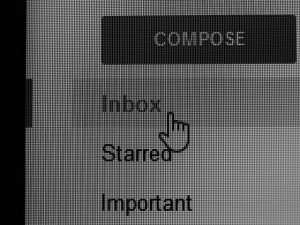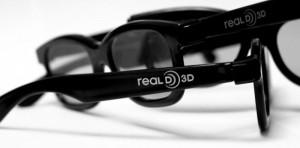Dental promotion ideas
2 Actions That Will Protect Your Dental Website from Being Left-Out-in-the-Rain
 My first thought was, “On a holiday at 6:30 p.m.?” But when I saw him standing there, in the rain, at the edge of my front porch, another thought occurred to me.
My first thought was, “On a holiday at 6:30 p.m.?” But when I saw him standing there, in the rain, at the edge of my front porch, another thought occurred to me.
His chosen approach has much to do with how you reach your audience via your dental website.
My soggy, evening visitor was going door to door selling the opportunity to “…have a few minutes of my time…” He wanted to talk about my home security system.
A number of thoughts raced through my mind in the brief moments I felt sorry for him standing there, on my doorstep, rain-soaked from walking door to door in my suburban neighborhood.
One thought dominated them all.
“There has to be a better way…!”
I’ve always admired door to door sales dedication. Seriously, it takes a level of perseverance (or desperation) to do it (I can relate having done my fair share of it a few years ago for a variety of reasons).
I peddled everything from products to ideas. And I gained much from the experience that serves me to this day.
That said, technology has vastly improved the “sales” relationship. Say what you will about the grass-roots, guerrilla marketing, bootstrapping diligence of the committed few who knock it out door to door.
There IS a better way. And how you’re attempting to reach your audience via your website could be the door-to-door equivalent of my soggy, holiday, dinner hour salesman.
“You had ONE job…”
Your dental website has one fundamental purpose. And depending on your specific niche it could be patient related or product/service related.
That ONE job? Compel action from your reader.
Let’s define action. And let’s bottom-line it, shall we?
For the dental practice, most often your website’s sole purpose is compelling a new patient, current patient, or referral patient to schedule an appointment. I’m not going to argue the sub-categories of appropriate purposes. Let’s keep it simple.
For the dental industry service or product business, the common driving purpose is compelling a new client, current client, or referral client to order products and services from you. Again, corollary purposes aside, let’s stick with the basics.
What gets the job done?
My soggy door to door sales-guy gets points for effort. But more important, and he knows this, it’s a numbers game.
Every “No” gets him closer to a “Yes.” It’s common sales motivation.
Is this true when it comes to your website? Does every visitor who searches for dental services, arrives on your site, and leaves with a “No” get you closer to a “Yes?”
And if that’s true do you have the time to measure it? (Understanding, of course, that you can deep dive into your site analytics and get a boat-load of relevant answers to that question.)
I choose to deal in the realm of what increases the likelihood that they’ll not only STAY but RETURN again and again.
In this instance, it’s about relevant, useful information.
And speaking of a deeper dive, allow me to clarify what “information” I’m NOT talking about.
There’s more to useful, dental website information than standard, overly technical explanations of crowns, fillings, dental hygiene, implants, etc. And there’s way more than talking about your latest, state-of-the-art, high-tech equipment. You know, the equipment you’ve just completed hours of training or CE credit for the qualification to use it on patients who you assume are laying awake at night longing for the opportunity to sit in your op-room chair to experience it.
I overstate my case. But that’s the door-to-door equivalent on many dental websites when delivering information.
“Hand that dude a towel…” (so he can dry off and throw it in).
It’s time to renew your website, the kind of information you share, and how you share it.
As I earlier observed following my dinner time sales intrusion – “There has to be a better way…”
Do this…
1-Build your authority by being a reservoir of useful information.
These days information translates into trusted expertise. Notice I added the word “trusted.”
I don’t have to tell you that a search for “dentist” in your city/region will return pages of apparent expertise. Most are trustworthy and treat their scheduled patients appropriately – you included.
How and where you rank in that search determines whether they’ll give you the opportunity to show your trustworthy treatment approach. You can pay for that ranking via Google Ads, etc. hoping they’ll discover you to be everything they’re searching for in a dental provider…and then some.
Or…
You can show up consistently as result of useful information about the treatment, service, or procedure that they’re interested in.
- Blog content, podcasts, video, and social media content relevant to your reader’s questions, problems, and concerns spotlight your authority in today’s digital media world.
- Build a list of topics from the questions your patients and people you consult with are asking.
- Create useful, easy-to-access content.
- Make the content available on your website’s blog/article page, via a podcast button (linking to a downloadable audio file or an iTunes channel), or a link to your dental practice’s YouTube channel.
2-Be consistently available with answers to the questions patients/clients are asking.
There’s more to answering questions than filtering a select few through your website’s FAQ page.
- Make your web page’s sidebar a billboard for where site visitors can get answers to their questions.
- Create compelling content titles that capture their attention (make them scream, “Read me!”) in the “Recent Posts/Articles” section.
- Show your interest in patients by making your content about them and their questions…not you and your latest technological advance, credentials, etc.
Trust translates via being attentive. Your attentiveness shows up in being useful via quality content.
Don’t get left-out-in-the-rain on your dental website. Persevere, sure.
But be certain that your diligence is, above all, useful to those you’re seeking to compel.
3 Dental Email Marketing Strategies to End Inbox Overwhelm

Creative Commons
“Email is where keystrokes go to die.”
Wait! Don’t send email to the bottom of your dental marketing strategies.
But before you send another email it would help to understand the value of your efforts.
James Clear wrote about Microsoft employee and productivity expert, Scott Hanselman’s jolting perspective.
“Email is where keystrokes go to die. You have a finite number of keystrokes left in your hands before you die.”
It makes sense that you should value your energy. Yet what if you evaluated each word you type?
- Would it change what you wrote in your most recent email message to your list?
- Could you use those same keystrokes to create a message or blog post that will help your readers rather than potentially repel them with another in-office special?
A simple fly-over of your own email inbox will quickly remind you of how overwhelming content can become. It’s no surprise that you wonder –
“How do I get the most return from the emails I send to my practice, house, or business list?”
That’s a good question. And there’s a one word tweak I’d offer to shift your perspective slightly.
This slight shift in perspective could be the difference in the effectiveness of your email marketing strategies. It’s all about valuing your ability to influence people for the good you want to deliver.
After all, you’re a professional. Whether you provide dental services that transform someone’s health and appearance or you provide products and services that enable dental professionals to accomplish those goals – you have something to offer.
So…here’s the shift in focus I earlier mentioned…ready?
Every marketing strategy you use (email included)
is about the “give”rather than the “get.”
It’s a valid question to ask – “How do I get the most return…”
I’m in business just like you are. I have a finite amount of time (and keystrokes) to share my expertise with the world. So getting the job done is alright by me.
These days – and here’s the deal – it’s to your advantage to give something to get something. Patients, buyers, shoppers, clients (whoever we’re talking about) are over the whole in-your-face, hyped-up sales approaches.
Make Your Keystrokes Matter by Ending Email Marketing Overwhelm
1-Email is only as effective as your intention.
Amazing thing about your senses. Especially your sense of smell.
Isn’t it interesting how you can sniff someone’s intentions. This happens with marketing all the time.
A subject line can reveal a lot about the sender’s desired result. There’s been much debate about whether you should veil your intentions or cut to the chase.
The answer depends on your relationship with your recipient(s).
For example, if you’re accustomed to a bottom-line sales message, it won’t surprise you when a subject line introduces a can’t-miss offer. If you’ve purchased from them before and you’ve benefited from their product or service it’s no issue to you.
But if you’re not on that level yet…well…you feel the turn-off. Am I right?
Think about the email communications you’re sending.
Are they worded as if the reader is a satisfied user, patient, client, customer that you’ve established a trusted relationship with?
Or…
Are they filled with numbing, pitchy content that makes the reader feel like a list number minus any real connection with you?
Check your intentions at-the-cursor. Value the relationship you have with the reader first, and in many instances, long before you value their dollars.
2-Email is engaging when it connects emotionally first and economically last.
People put their money where their heart is. That’s not a trite take-off on a common idea.
This is one of the fundamental rules of selling –
“People buy things for emotional not rational reasons.”
These days it’s more about engaging than selling. I know…I know you’re tired of hearing about engagement.
Engagement this. Engagement that. I get it.
But don’t dismiss this trendy word before you realize its intrinsic worth to your email marketing.
If you want to connect with people, get their attention. And once you have it, respect it.
Don’t dumb-down or numb-down your connection with overkill on promotional hype.
Give your readers something that sticks with them from the first keystrokes you make.
- Tell a story in the first paragraph (the lead).
- Connect the story to their problem (the body copy).
- Reveal the solution via your service/product story to their problem (the close).
And don’t forget the all-important element…
- Compel them to open and read (engage with) your email content by crafting a short, catchy (not too cute or hypey), benefit-focused subject line.
3-Email energizes your reader when it does two things:
When it’s useful – avoid short-changing or duping your reader list. Give them something they can use every time you email them.
If you’re promoting a service or product connect that to a problem they have. Make your service/product the useful benefit to solve a common problem even if they don’t schedule an appointment or purchase the product/service.
Share links to other relevant content via colleagues’ or industry leader’s blog, YouTube channel, Podcasts, etc.
Give bonus paybacks just for reading your email – add them to an exclusive group for your next promotion (before the general public), allow them priority access to a specific treatment, service, or product feature.
When it enhances communication – remember, connect before you ask for something.
Take time (via an email or two…or three) before you invite them to do something. This reveals that you value them more than what they do for you.
Ask relevant questions to understand how you can help them via your services, products, etc.
Create new email content around answers to those questions (talk about maximizing the value of your “keystrokes”).
Ask before you tell or offer. Communication works better that way.
Make your words matter – every single keystroke.
3D Dental Copywriting That Compels People to Choose Your Services

Saying something is good, great, state-of-the-art, etc. makes a point. But if you want your dental copywriting and dental marketing content to have “punch” you must go deeper.
I occasionally watch a local news program during lunch. It’s one of those noontime programs that features entertaining, informative special segments during the hour long broadcast.
The host anchor made a comment during an episode’s cooking segment that I’ve laughed about many times since. The segment featured the use of beer in a particular recipe for a meat based pie.
The guest cook discussed the various ingredients and in particular the use of beer for added flavor. The host anchor responded off-the-cuff and enthusiastically – “I don’t drink beer…but I sure do like it in my pie!”
I don’t know why the anchor’s statement made me laugh. But after doing so, it made me think.
Products and services have multiple benefits.
Beer, for example, is a refreshing, enjoyable beverage. Even so, many don’t prefer drinking it…but they will add it to a recipe.
That said, the dominant benefit that’s used to market beer is what? It’s not people sitting around, partying, pouring beer into a kettle on a stove top.
There are dominant benefits and there are dimensional benefits.
Copywriting master, Clayton Makepeace says there are “3 deadly blunders” made in marketing copy and content.
- Mistaking features for benefits.
- Mistaking processes for benefits.
- Missing different types of benefits.
His solution: “Drill down to the real, bottom-line rubber-meets-the-road benefits your product (or service) provides.”
Someone “drilled down” and discovered (perhaps while sipping an ice-cold, refreshing brew) that beer adds flavor to a favorite recipe. Beer as a refreshing, relax-with-my-friends beverage is a dominant benefit. Beer as a flavor-enhancing ingredient in your main course is a dimensional benefit.
3D your products and services to add compelling power to your dental marketing copy and content.
Comprehensively inventory your product/service features.
List every objective fact your product/service has. What’s unique, special, compelling, interesting, etc. about the dental service you’re promoting right now?
List everything you can think of.
- What’s its purpose? What does the service do for your patient/client?
- What are its physical characteristics? How will a patient/client experience it visually, by sound, taste, etc.?
- How long does it last? What will the experience be like? When will results be seen? How does it compare?
- What’s been said about it? How have others experienced it? How is it guaranteed?
- What choices are offered? Size? Color? Flavor? Is it customizable?
- How is it priced? Is it dividable by cost per year, month, week, or day?
“Attach a ‘Why’ to each feature”
Feature: Digital x-rays are the latest, state-of-the-art technology. Why: Faster image views means less time in the operatory.
Feature: A TV in every exam room. Why: More comfortable for the patient and time passes quickly during the appointment.
The “Why” forces you to think about benefits. People are sold by benefits not features.
Transform features into benefits.
Force the all-important question before you promote your product/service. And the question is: “What’s in it for me?”
Features must connect. Your patients or clients must experience (via your copy/content) how the service directly improves their life.
What fear does it help them overcome? How does it save them time and money? What have others experienced by using it?
“Dimensionalize each benefit.”
Feature: A TV in every exam room.
Why: More comfortable for the patient and time passes quickly during the appointment.
Benefit: Your appointment is over before you realize it.
Dimensionalized benefit: Great for fidgety kids. The time zips by. In fact, just last week little Jimmy asked if he could stay longer at the office!
Get “emotional” by connecting each dimensionalized benefit with a dominant resident emotion.
Think about how your patient/client will FEEL personally after they’ve enjoyed each benefit your service/product provides.
And there’s another emotional perspective people have too.
How will your patient/client feel as others see them enjoying your services’/product’s practical benefits? That’s an even deeper question.
There’s more to your services and products than meets the eye. Go deeper and tap into the compelling reasons people will buy-in.
Question: Why is it easier to focus on features than diving deeper into benefits? How is dimensionalizing your benefits useful to you? Comment.
3 Compelling Ways to Use Story in Your Dental Marketing Content

Stories have power. It’s why you enjoy a night at the movies or a compelling summer beach read.
And speaking of compelling – that’s the super-power element of effective stories. They compel you.
Your dental marketing content will succeed these days over the marketplace noise for one reason. And you should evaluate your copy and content by this emerging standard.
Story sells.
A recent post on Copyblogger compelled me to explore more deeply this whole idea of story telling content. I’ve been a fan of it for awhile.
The Copyblogger article carried me to another dimension in my future writing for clients. And it will do the same for you if you value having your dental marketing content stand out.
Sean D’Souza says your content storyline must have three core elements to compel a response.
1-The sequence – the events (points, ideas, etc) that build upon each other and create meaning.
2-The suspense – the drama of what’s happening, what’s up, or what’s approaching.
3-The roller coaster – the up and down and all around of good to bad to good, etc.
The reason story works.
A fair amount of marketing content is full of hubris. It talks about YOU, YOU, YOU.
Overused phrases like “state-of-the-art,” and “We’re proud to (announce this or that),” offer very little compelling value.
Where’s the story? And if there is one how does it benefit the reader?
Leaving out compelling benefits mutes your storyline. It’s like reading a clearance-rack biography or paying good money for a 1-star movie – boring and disappointing!
A story (your job: to find it – or hire someone who can – and tell it) has the advantage of a logical and compelling sequence of events. Add in some suspense and a roller-coaster of features and benefits to draw your reader in.
What does this have to do with dental marketing copy and content? Good question.
Enough “suspense.” Here’s the scoop.
3 Story-Intense Dental Marketing Content Tools to Compel Interest in Your Services
1-Case studies
These are story super-powers. A case study is basically a success story.
A dental case study would include a “villain” such as oral cancer, periodontal disease, bleeding gums, yellowed teeth, crooked teeth, etc. Your sequence of events would include the problem, product/treatment/service, and the solution story.
When a patient or prospective client finishes reading this brief success story they’re compelled to take action. Your offer is the action that will solve their problem and create a profitable outcome for you.
2-Blog posts
Appear regularly on your reader’s radar. Blog posts have viral capacity because they create a “what’s next?” response.
Read a compelling blog post and you’ll anticipate the next one. Blog content is evergreen and ever evolving.
Exceptional bloggers earn a spot on your newsfeed. You bookmark their content like you do a favorite passage in a novel or non-fiction book.
Your blog posts will move up the list of fave-reads when you add in story factors.
Keep your posts to between 350 and 500 words on average. Tease the next post by not giving away too much “plot.” Your readers will thank-you by returning again and again to follow your “story.”.
Blog posts build trust too. Become a trusted expert by delivering trusted content week in week out.
Eventually readers become patients, clients, or customers. They will buy/seek your services when you’ve proven yourself as a trusted source of expertise via your blog content.
3-Email
Email is a perfect (and overlooked) canvas for story based copy. Avoid jumping in with your promotion or facts that tip the reader that this is another sale-sy email.
Lead with a story. How?
Listen to culture, current trends, local events, your own experiences. Use these to craft a story that introduces your email.
Lead with a story in your email copy. The added drama will compel your reader to stay with you.
Two essentials – make a good transition from the story to the email purpose (promotion, information, etc.).
And…don’t miss this…
Write a subject line that prompts the email to be opened. Many emails fail at the inbox level because the subject line is anything but compelling.
An email subject line is like a movie trailer. It must move your reader to see the full feature.
Add some drama to your dental marketing copywriting and content. Use story to compel interest and your expertise will profit.
Which content “tool” do you most often use to promote your dental services?
4 Words That Can Transform Your Dental Marketing Copy
Benefits sell! That’s core to effective copywriting and the power language you need to promote your dental services.
The Sunday edition of my local newspaper featured two ads that got my attention. How they got my attention is what’s important to this post (realize henceforth – I’m more critical than the average reader).
First, it WASN’T the somewhat eye-candy graphics or the positioning on the page (two big deals to most newsprint advertisers). Second, it WASN’T the headline – at least in the way you might be thinking.
The ad’s colors and placement did draw my eye to it. But it was the headline that bothered me.
The ad writer did the common, believed effective, ad naseum, amateur, I-have-a-gazillion-ads-to-write-today-so-I’ll-take-the-easy-way, feature-first headline approach. And perhaps wrapped it up by asking the design department to throw in some cool colors and bold fonts so people notice.
I confess – I read the ad. Was I compelled?
That’s the question your copy must answer – is it compelling?
And copywriting that compels doesn’t lead with features (everyone does that) it leads with benefits.
This brings to mind a recent meeting I was in. Our dental hygiene team was discussing how to promote oral cancer screenings to our patients. Even though the service is undeniably beneficial and has a relatively low cost point (beyond insurance coverage) some patients aren’t compelled.
No doubt it’s a beneficial procedure. But how do you get to the compelling core benefits without dumbing-it-down with feature heavy content and graphics (what I’ve called “est-syndrome” in previous posts.).
Here are 4 words to keep front-of-mind when mining the benefits of your dental products and services.
1) Urgency (Think-if they don’t get this now the world as they know it will end)
Act now! Limited time offer! You must do better than that.
Give your reader a hot-seat reason to jump NOW to get your product or service.
How can you tell the story in the most compelling way? That’s the question.
Urgency isn’t just about prompting a decision. Urgency is about removing the gap as quickly as possible between decision and action.
2) Usefulness (Think – this is so practical…I must show them)
Not all products and services are ultimately useful. So it makes sense that the promotional copy lacks it too.
Do the hard work required to find a product’s or service’s usefulness that’s not obvious. The ultimate task of your copywriting is painting a picture of practical action.
Who’s using the product/service? What’s happened to them? When did they first discover it’s effectiveness? Where are they looking to use it next?
3) Uniqueness (Think – no one has the “angle” we do. And that “angle” is…)
Being unique is overrated. Especially when it’s confused with creative.
How creative your copy is doesn’t necessarily mean it’s unique. You must find a way to tell the story in a way no one’s told it yet.
This may or may not be the most creative. A unique message is about captivating a person’s buying emotion in a way no one has before so the buying decision keeps repeating itself.
4) Ultra-specific (Think – then think again…and again until it’s crystal clear)
The problem with many marketing messages is just that – they contain more than one message. The key to specificity (love that word) is funneling all the possible ideas into one, compelling message.
Too many messages in a single promotion confuses. Compelling copy is about clarity.
It’s the difference in a laser and a light-bulb. One illuminates, the other penetrates.
Certainly, the end result you desire is more than merely illuminating your “market.” Why not penetrate it?
I’ll admit I’m more critical of marketing copy than the average reader. But I know good copywriting when I see it.
And usually it’s because I’m reaching for my wallet.


